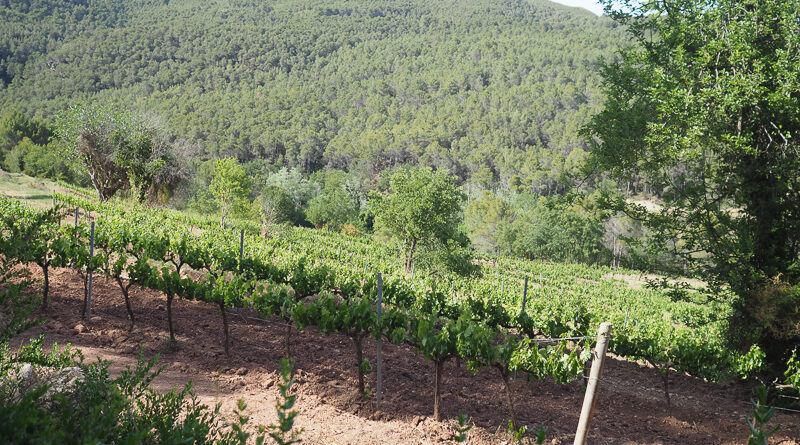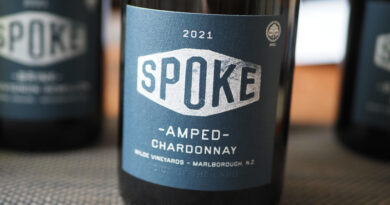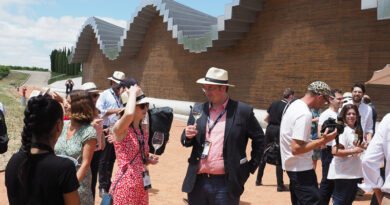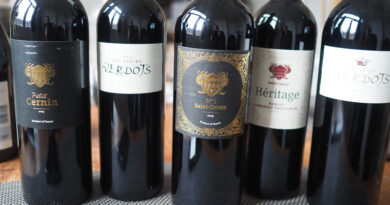Cava discovery (2) Parés Baltà
Website: https://paresbalta.com/en/
Part one of this exploration of Cava begins with Parés Baltà. They are one of the most exciting Cava producers, with a sizeable 200 hectares of vines that have been Demeter certified biodynamic since 2013. The vineyards are spread over five different sites, including some beautiful terraced plots in the Foix national park. I met with winemaker Marta Casas to tour through some of the vineyards, as well as taste widely from the range.
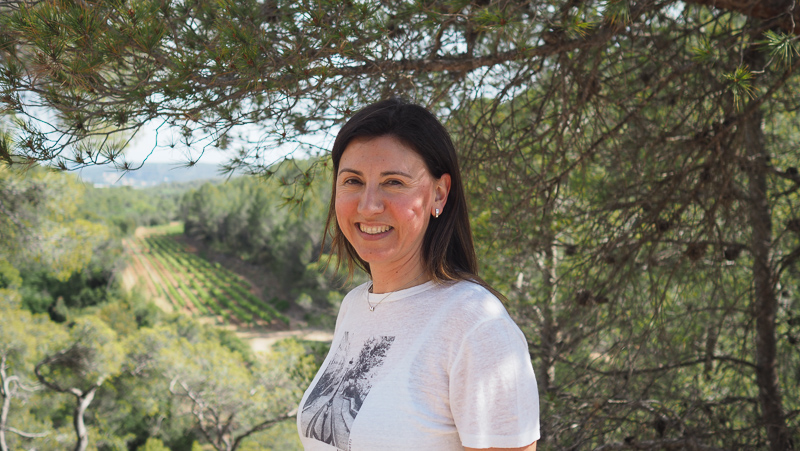
‘We are a family winery,’ says Marta. ‘Me and my sister-in-law Maria-Elena came from out of the family. We are the wives of the two brothers, Joan and my husband Josep. They are now managing the winery.’ But the winemaking has been in the hands of these two sisters-in-law for 20 years now.
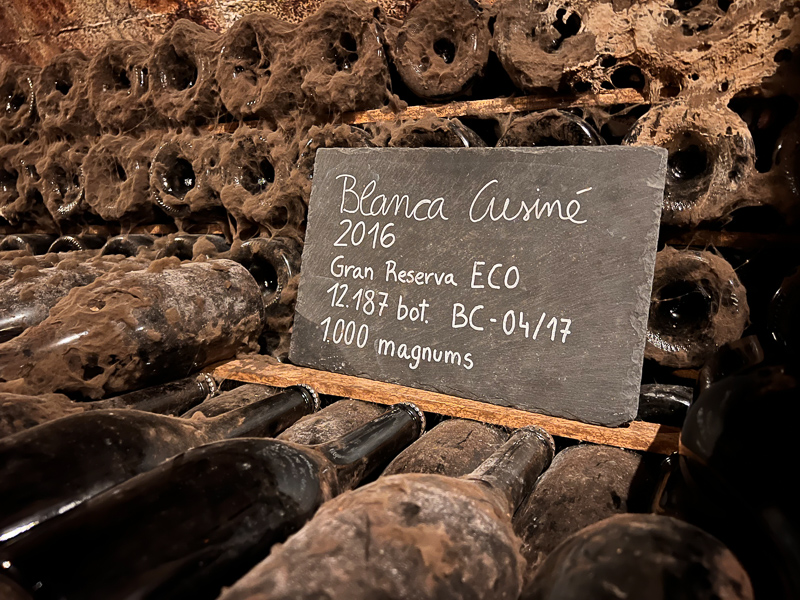
Marta was a pharmacist when she met her husband in 1998, studying the fourth year of five. ‘Little by little I learned about wine, and when I finished pharmacy I wanted to study winemaking only,’ she says. ‘I went to Tarragona to the university, and the first vintage here for me was 2002.’ It was a tough time because she was combining her studies in oenology with work as a pharmacist.
Maria-Elena was trained as a chemical engineer, and she started at the winery in 1999. In those days the winery was just making one range of Cavas and some table wines in a very generic style, and the new generation started changing things.
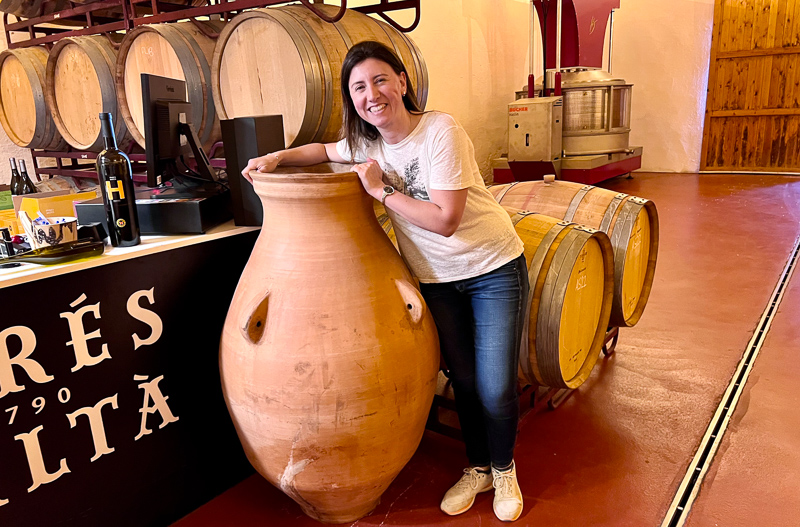
One of the ways that they innovate is using clay amphorae to ferment and age some of the wines. All the winemaking is low intervention, but they have some wines which are made without added sulfites.
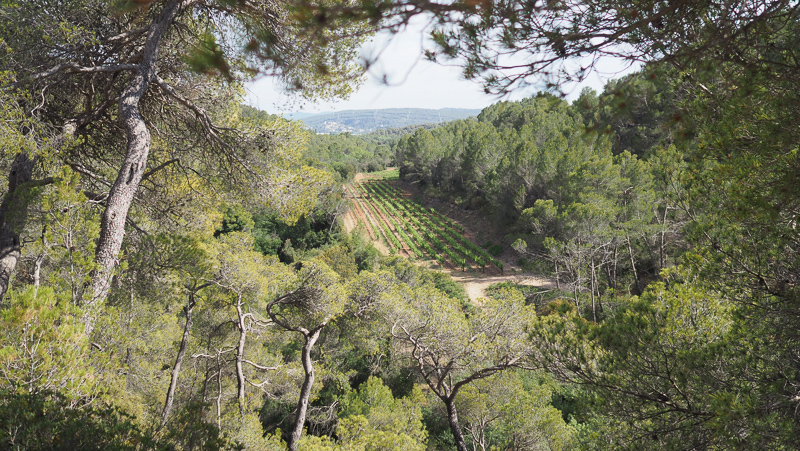
The spectacular Las Valls estate is in the hills, and in 2008 they discovered an old (2500 years) Iberian site which was designed to fire terracotta vessels. They found another in 2012, complete with sewers and ovens. The ceramic vessels made here would have been used to transport wine and other liquids across the Mediterranean. They have since taken clay from near this site to make their own amphorae, which are used in some of the wines.
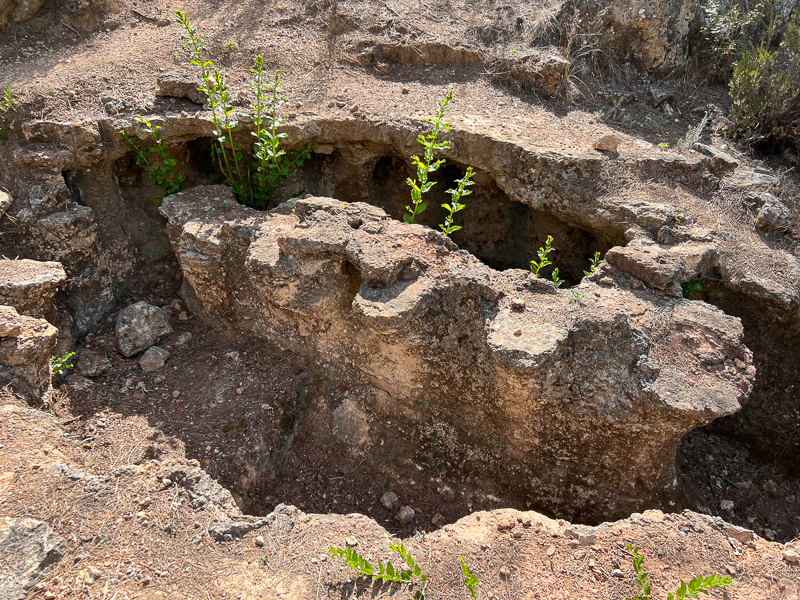
From the beginning they were certified organic, but then Marta began trialling biodynamics, which she had become curious about. ‘It was a surprise for us,’ says Marta. ‘At the beginning I was a sceptic, as a pharmacist then winemaker.’ But she found herself changing her mind. ‘I made this connection, and now I am a teacher of biodynamics. You must never say no, because then you find yourself saying yes!’
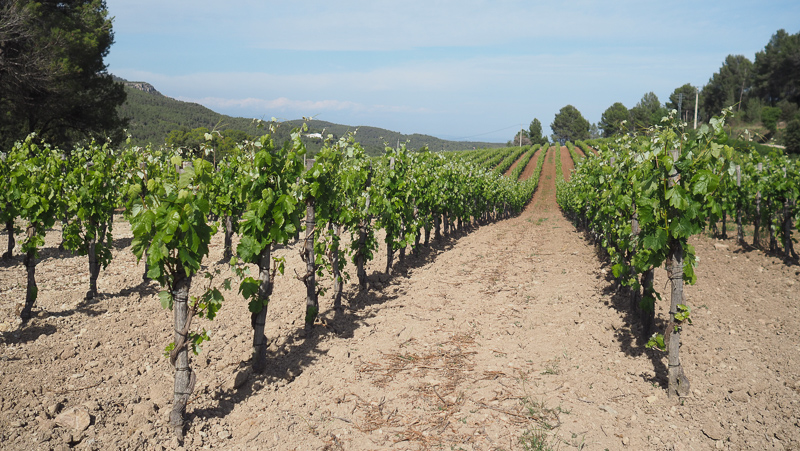
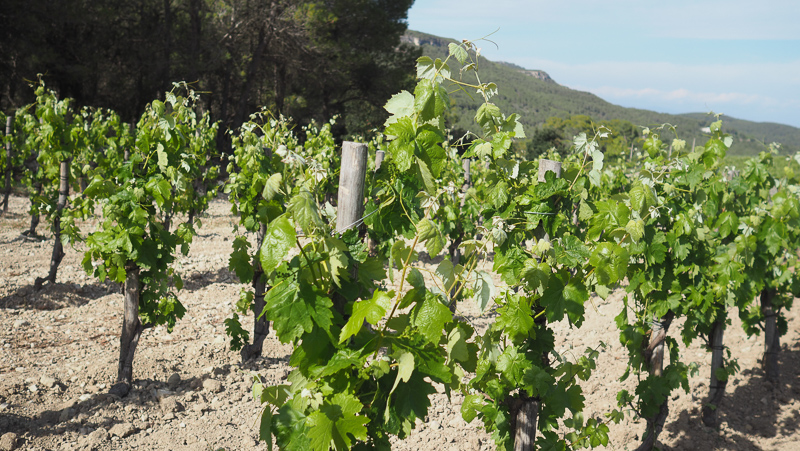
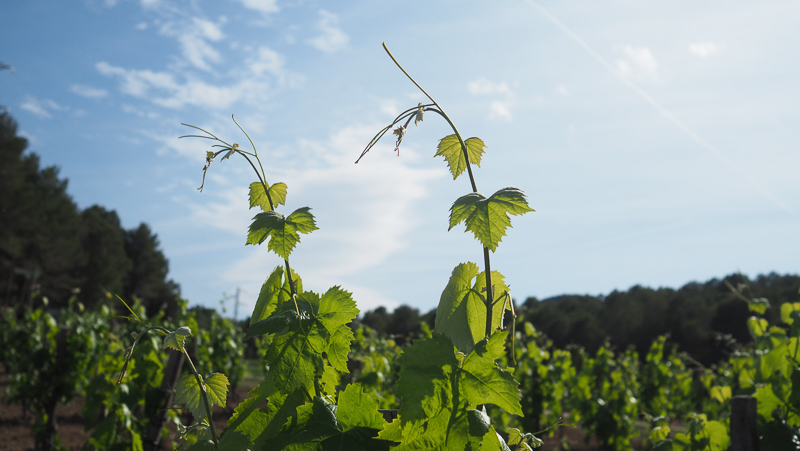
‘Imagine in those days, a pharmacist and a chemical engineer coming to the site.’ The grandfather of Josep and Joan was still working here managing the vineyards. His strategy was to start in the lowest vineyards, then coming to the mountain. ‘It was not our vision to make the best wine. For this reason the wines were normal. Basic but good. We wanted to choose different plots, making different experiences with monovarietals, not always mixed in the harvest.’ The grandfather didn’t find this approach easy. But they girls soon realised that they needed to forget all the things that had been taught them in university. They decided they wanted to make the wines as naturally as possible, adding only sulfur and copper in the vineyards, and then in the winery keeping it simple with just a little bit of sulfites.
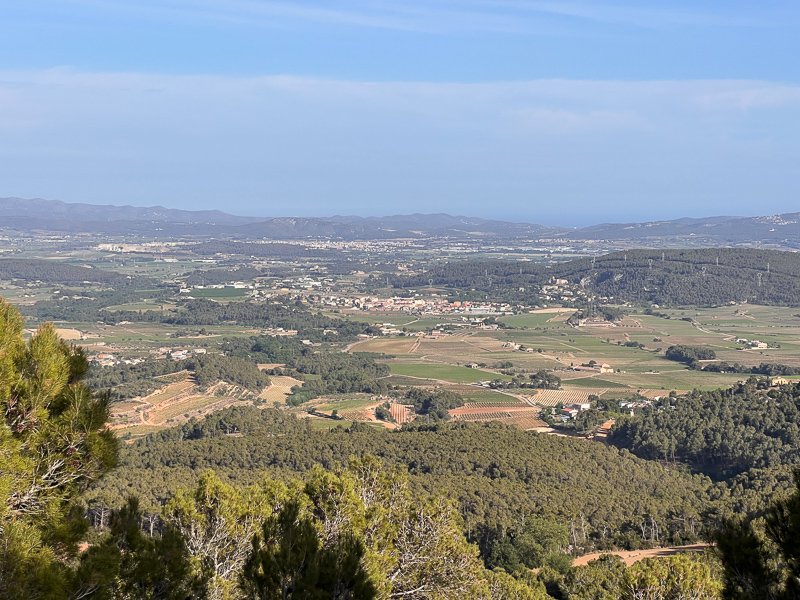
‘Xarello is our icon variety,’ says Marta. ‘It’s so versatile.’ But they are also starting to work with some ancestral varieties from the region. The previous generation started planting Cabernet, Merlot, Chardonnay and Pinot Noir, but this newer generation is turning to old varieties, better adapted to the place. ‘We are working with varieties to fight against climate change,’ says Marta. ‘We realise we have our jewels with our ancestral varieties.’ She sites Mavasia of Sitges, Sumoll, Cariñena Blanca, Forcada and Moneu. They have been planting these since 2017, when they started with Cariñena Blanca. While the harvest date for other varieties is creeping into July, these old varieties have a longer cycle. ‘We can pick them in September,’ says Marta. ‘The longer cycle of these varieties allows us to pick the grapes without so much stress.’
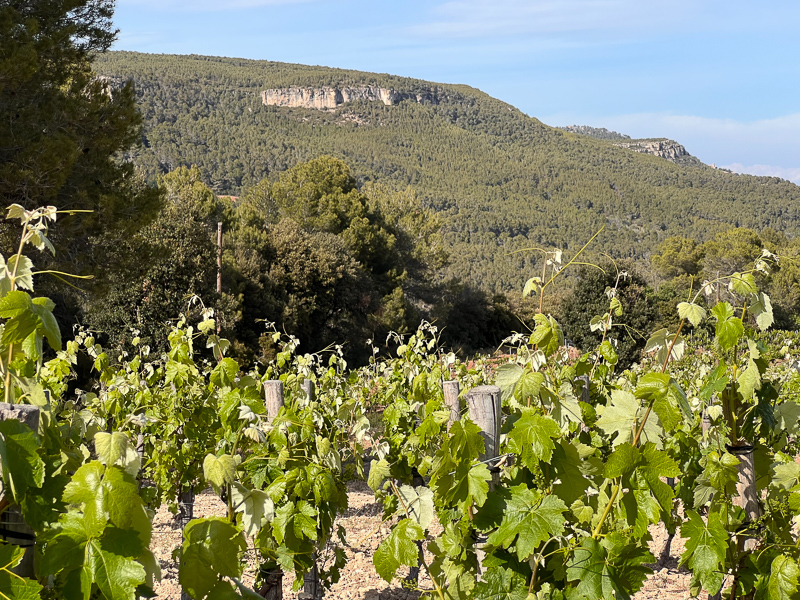
‘For making Cava we have a lot of issues with sugar content,’ says Marta, ‘because we have a maximum limit for the base wine, and if we have more then you have to blend. The solution is to pick the grapes earlier, but then we might not have flavour. With these [ancient] varieties we have less problems with this.’ Miquel Torres is friends with Marta and her husband, and Torres did work to identify some of these ‘lost’ varieties, which were then given to the appellation of Penedès. They can’t yet be used in Cava, but this may change.
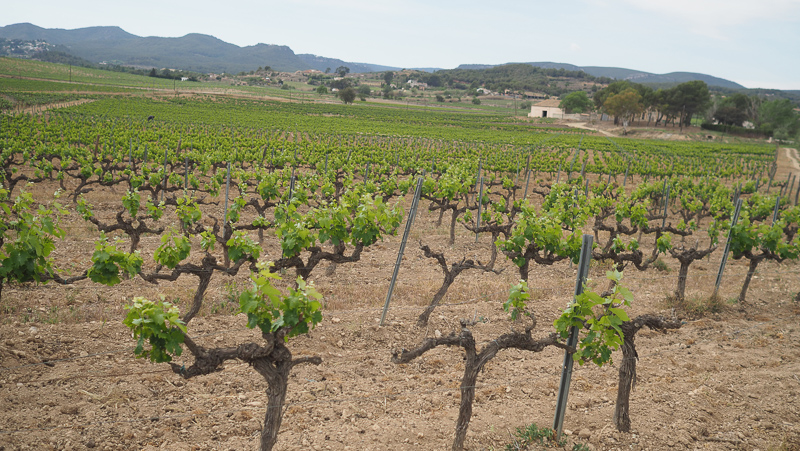
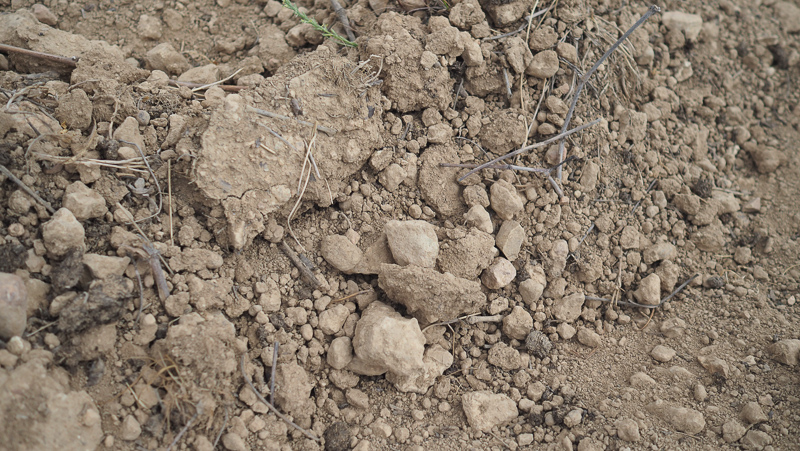
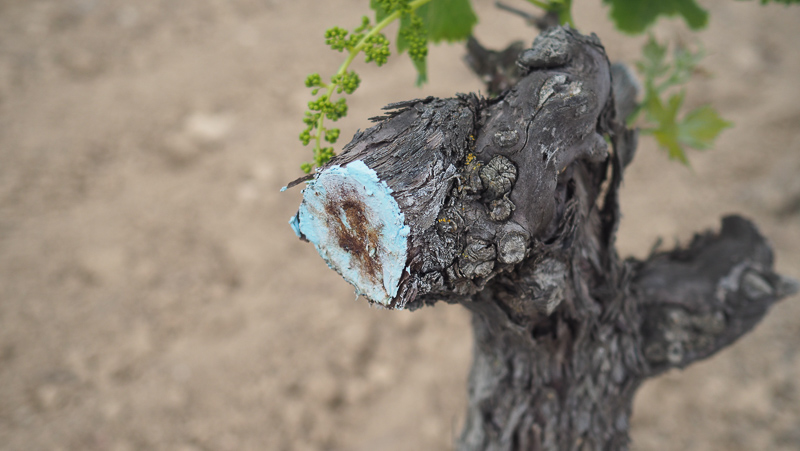
Another change they have implemented is respectful pruning, working with Roc Gramona and his pruning academy in Vilfranca (he’s the local representative of Simonit and Sirch), on ways to prune that help extend the life of the vines by maximizing the sap flow. Marta has done the three grades of this.
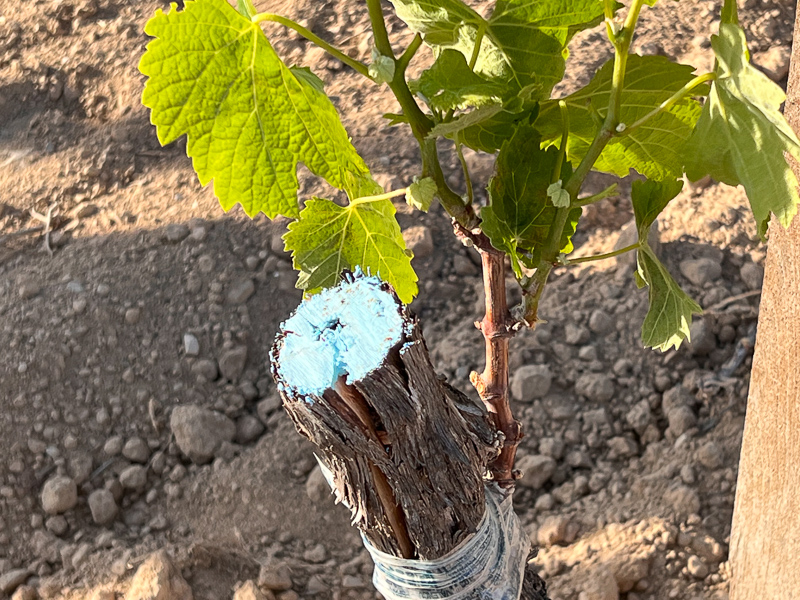
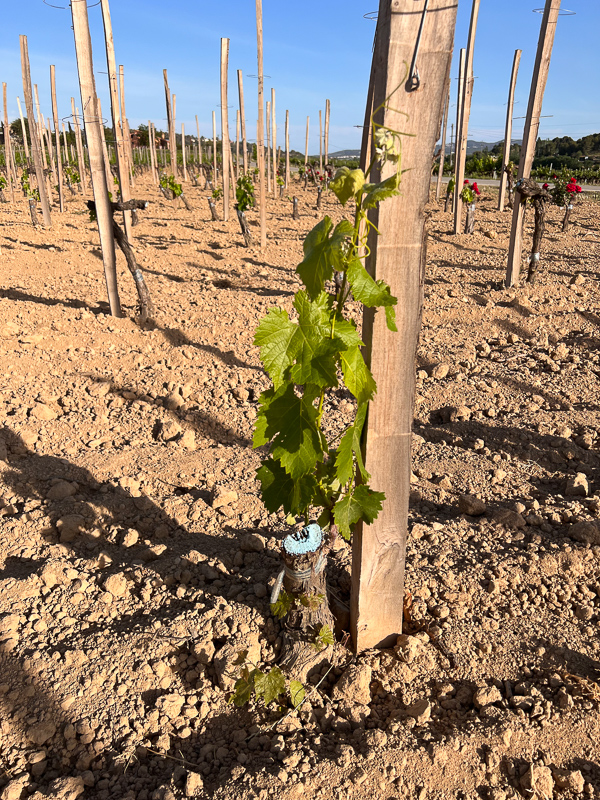
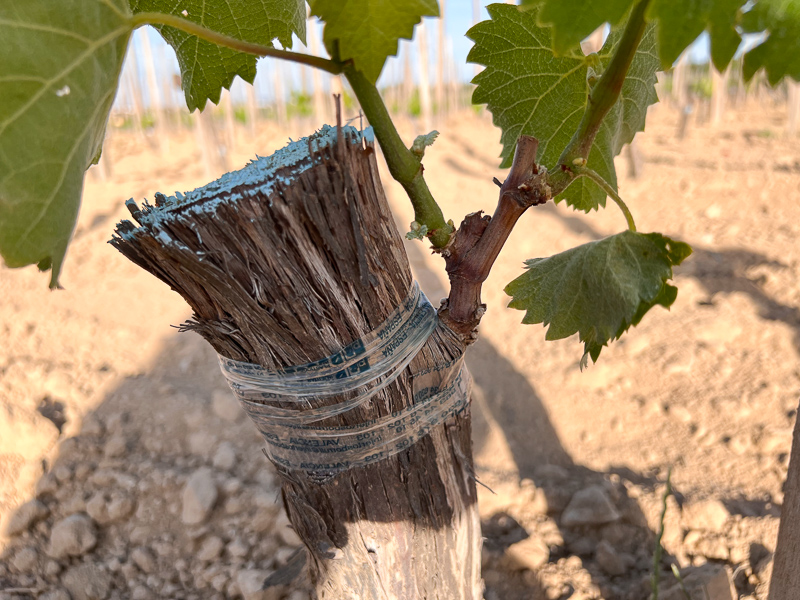
They have also been field grafting the ancestral varieties into blocks with varieties like Merlot that aren’t well adapted to the region. This has worked really well.
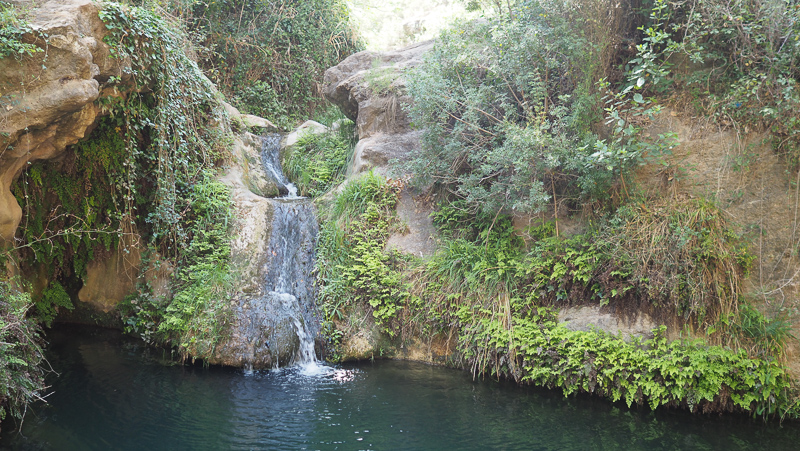
We spent most of our vineyard time in Mas Valls, which is their estate in the Foix national park. This hilly region is where the Foix river runs from, and this is the most important river in the Penedès. For a long time the ancient terraces were used for growing red grape varieties until they were wiped out by Phylloxera, but they have been restoring and replanting them, with spectacular results.
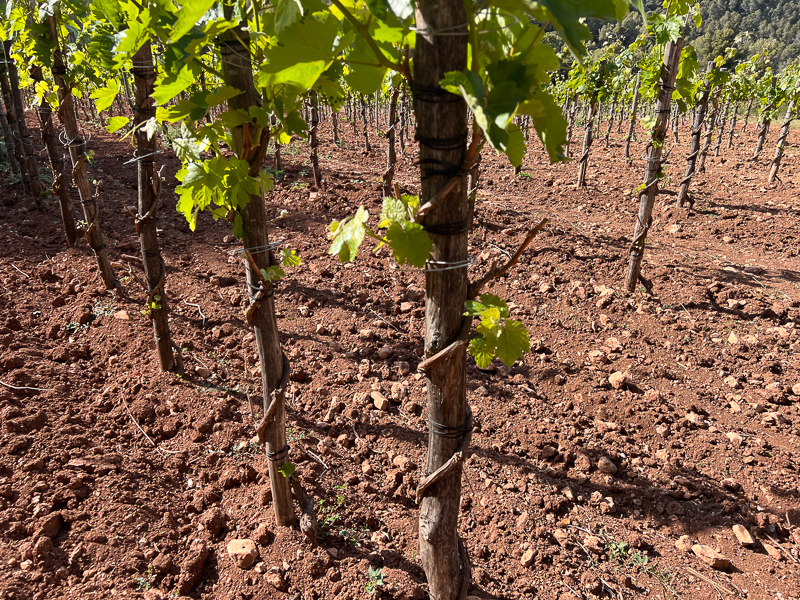
THE WINES
Parés Baltà Brut Nature Cava NV
This is 2021 vintage. Xarello, Macabeo, Parellada. Bright, fruity and lively with nice citrus fruit drive. It’s lemony with some dried herbs and a bit of spice. Lovely fruit expression and freshness here. Juicy and expressive. 89/100
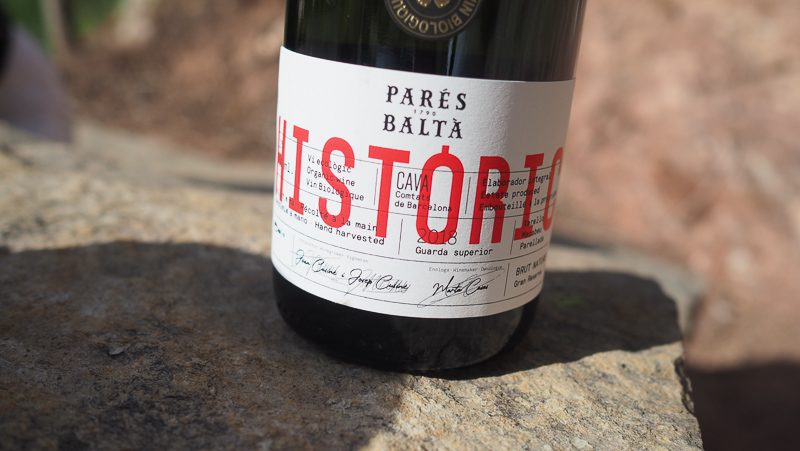
Parés Baltà Historic Cava Guarda Superior 2018 Cava Comtats de Barcelona
Brut Nature Gran Reserva. Full yellow colour. Has a lovely lime pith edge to the pure citrus fruit, with some pear and peach. There’s depth but also freshness with lovely mineral notes. Has complexity. 93/100
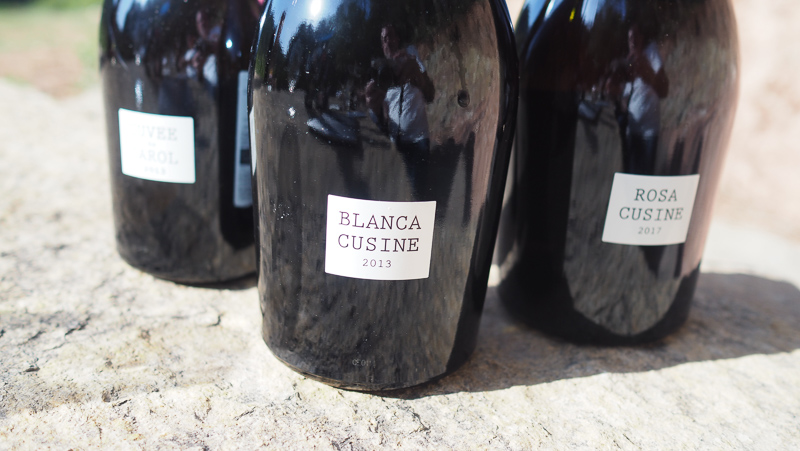
Parés Baltà Blanca Cusine Cava Gran Reserva 2013
Mainly Xarello (80%) with 10% Chardonnay and 10% Pinot Noir (this portion is barrel fermented). Disgorged January 2023 (9 years on the lees). Yello/gold in colour. Powerful with toast, honey and nuts with a lovely mineral edge and a lovely lemony finish, showing crystalline fruit. Marmalade, honey, toast and spice here. Very fine and detailed, with bold flavour. So fine. 94/100
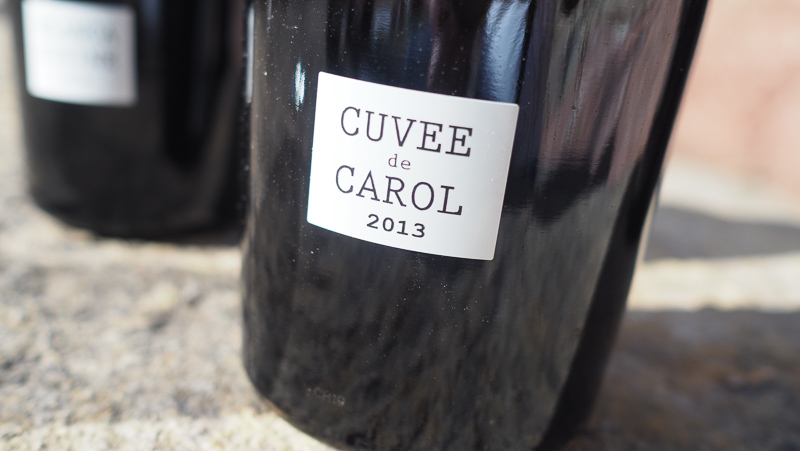
Parés Baltà Cuvée de Carol 2013
Disgorged 2021. Macabeo with a bit of Chardonnay. Very distinctive: herbal and lemony, and quite light, but nicely complex with some spicy framing to the fruit. Has toasty, herby, yeasty complexity with a powerful lemony finish. So refined and distinctive, combining lovely fruit and some nice herbal, savoury. 93/100
Parés Baltà Bassegues 2009
This comes from two plots of Foix, disgorged in 2021. The goal was to have 100% Xarello, but this has a tiny bit of Macabeo in it. Intense toasty, spicy nose with fine lime and lemon notes as well as a touch of mandarin, and subtle sherried notes. The palate is complex, yeasty and herby with lovely refined pear and citrus fruit as well as a touch of apple. Despite the depth this finishes very fine with some toast and a bit of spice. 95/100
Parés Baltà Rosa Cusine Brut Nature Gran Reserva 2017
Disgorged 2022, 100% Grenache at 800 m. Gold/orange/pink colour. Complex and lively with lovely strawberry, redcurrant and dried herbs. Lively with good acidity, some toast, a touch of hazelnut. This has great depth and character, finishing spicy and nutty. Lovely depth here. 93/100
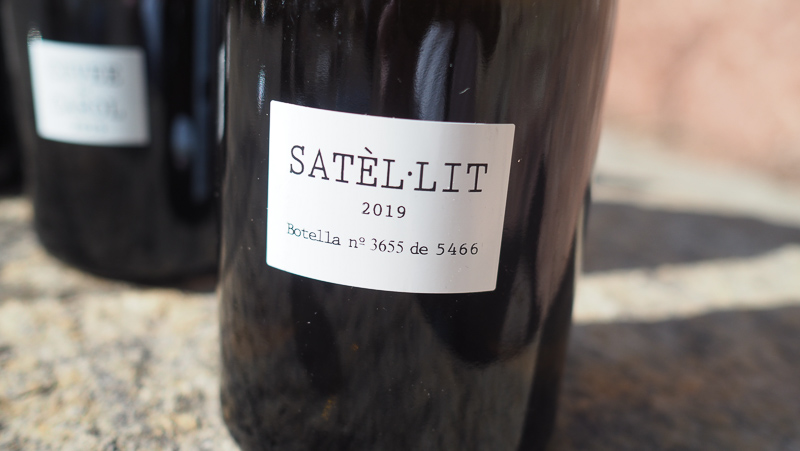
Parés Baltà Satèl.lit 2019 Penedes
Carinena Blanca, fermented in stainless steel and aged for 7 months in 500 litre barrels and demijohns, as well as stainless steel. Full yellow colour. Powerful, concentrated and lively with rich pear and peach fruit, as well as keen lemony acidity. So lively and textural with lovely flavours and a fresh finish. This is very refined. They got canes from a friend in Emporda where it is authorized and regrafted some vines. 94/100
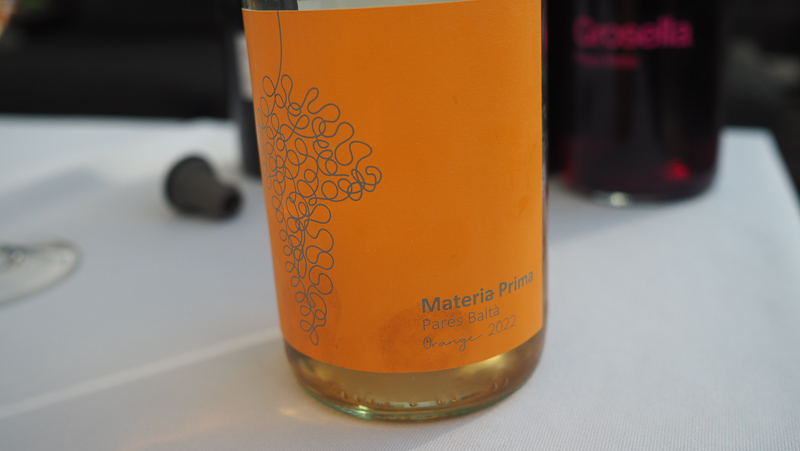
Parés Baltà Materia Prima Orange 2022 Penedes
12% alcohol. They added the press skins from Gewurztraminer to bring a touch of orange. This is bright, fruity and pithy with pretty pear and table grape fruit and some tangy cherry and lime fruit. Has brightness and a little bit of structure. Very expressive, with a pithy, slightly bitter aftertaste. 92/100
Two Sumolls, which are both quite different
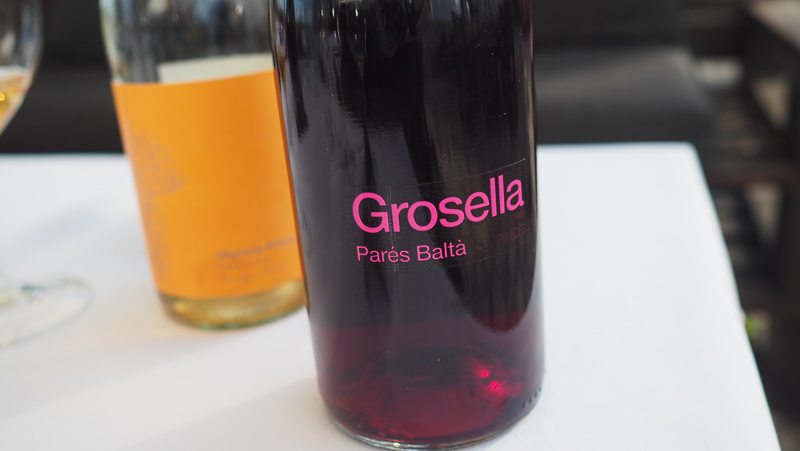
Parés Baltà Grosella 2021 Penedes
This is from a big-berried clone of Sumoll. Grosella means cranberry. Stainless steel. Fresh, linear, juicy and tart with lovely red cherry fruit. Fresh, tart with some cranberry and redcurrant character, showing good acidity. Very fresh and with massive drinkability. 91/100
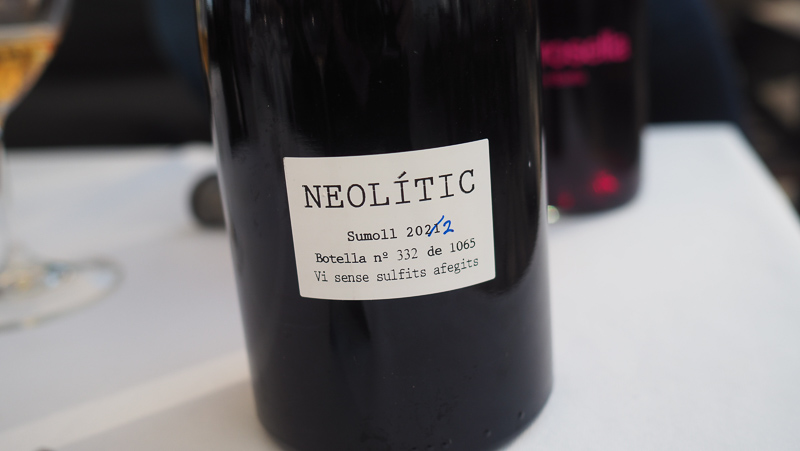
Parés Baltà Neolític Sumoll 2022
Stainless steel, low added sulfites. There’s a hint of red apple and redcurrant here with some crunchy tannins. Very fresh with a red fruit core and nice directness. A beautifully focused wine with drinkability. 92/100
Parés Baltà Moneu 2021
Stainless steel, this was the first year off young vines. Crunchy and direct with nice tannic structure sitting under red and black cherry fruit with some orange peel notes and nice acidity. Very fruity and expressive. Lovely raspberry brightness with a sense of freshness. So much promise here. 93/100
CAVA DISCOVERY
- Cava discovery (10) Juvé y Camps
- Cava discovery (9) Augustí Torelló Mata
- Cava discovery (8) Bolet
- Cava discovery (7) Mastinell
- Cava discovery (6) Muscàndia
- Cava discovery (5) Codorníu
- Cava discovery (4) Vilarnau
- Cava discovery (3) Can Sala by Família Ferrer
- Cava discovery (2) Parés Baltà
- Cava discovery (1) an overview and a large blind tasting

